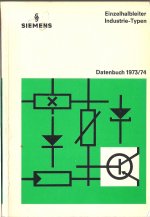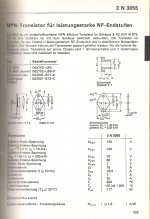Probably. But power transistor mask layout isn’t rocket science. At least for stuff this basic. If the process is different enough having the other maker’s mask set won’t do you any good either. Jellybean transistors and op amps, digital logic and such - if your process has a similar FLOW through the line, and makes devices which are good enough, then you could use the mask set. You still get different flavors of say the 5532 op amp from the different makers. Like the original Signetics beat everybody’s. But most were good enough to use industry wide.I know that with common ICs, mask exchange agreements became the norm but was that done at the single transistor level of did each manufacturer design their own version of the 2N3055 from the ground up?
Cheers
Ian
The MJL3281 does NOT use the same mask set as the 2SC3281. The die is about 25% larger. Don’t believe me? Crack them open and see. And the capacitances do measure more. They made it as big as the 15024, probably (speculation here) because their equipment was tooled up for it and they wanted it to handle as much power as they could. Their competition was Sanken, and you know what their LAPTs can take. It’s still the same shootout today (and I still think Sanken shot themselves in the foot by discontinuing the MT200 package giving the advantage back to ON). What they acquired from Toshiba was the recipe, or at least some of it. The die layout is trivial by comparison.
FWIW BD130 was an "European" 2N3055 equivalent in all important specs, I used tons of them and treated them as the same.
Why would a proud European Company use American registration codes for sales in their own market?
Would be same as Philips/Siemens/Mullard/etc.labelling their double triodes 12AX7 instead of ECC83 🙂
Of course there is not a "single" 2N3055 spec either, many different ones (different manufacturing processes) along the way.
For me, focused on abused Guitar amps, BD130 were an excellent version, slow but robust, and would gladly use them if I found a dust covered humid box of them in some seller´s basement, go figure 😉
Why would a proud European Company use American registration codes for sales in their own market?
Would be same as Philips/Siemens/Mullard/etc.labelling their double triodes 12AX7 instead of ECC83 🙂
Of course there is not a "single" 2N3055 spec either, many different ones (different manufacturing processes) along the way.
For me, focused on abused Guitar amps, BD130 were an excellent version, slow but robust, and would gladly use them if I found a dust covered humid box of them in some seller´s basement, go figure 😉
I have no privileged info about that, but I would lean towards the latter: second-sources generally had some improved characteristics over the original, which would have been hard to sustain with just good manufacturing/sorting.I know that with common ICs, mask exchange agreements became the norm but was that done at the single transistor level of did each manufacturer design their own version of the 2N3055 from the ground up?
Cheers
Ian
This means that additional ingredients probably went into the recipe
Here is an example of a datasheet from a Philips databook:

The databook dates from 1977, but the DS was filed in 1974:

Here is a listing of manufacturers from a 1980 D.A.T.A. book:

Here are some vintage examples of 2N3055, mostly from European origin (the one on the front with the faded marking is SSI).
Also included is the light alloy version from Moto (1971):

One more, from 1974:

And another one, exact date unknown but also seventies:

The databook dates from 1977, but the DS was filed in 1974:
Here is a listing of manufacturers from a 1980 D.A.T.A. book:
Here are some vintage examples of 2N3055, mostly from European origin (the one on the front with the faded marking is SSI).
Also included is the light alloy version from Moto (1971):
One more, from 1974:
And another one, exact date unknown but also seventies:
They were not aluminium IIRC, because they could be soldered. Also the top was not flat unlike other vendors' 3055s. Interesting are the gold plated pins which are clearly not meant for soldering.Those aluminum case TO-3s had a higher failure rate than steel. ... Later Motorola power transistors had steel cases.
In the above pic, the one with the Motorola M was aluminum. The others are steel and solderable if yiu were so inclined. The aluminum TO-3 was supposedly only good for 5000 thermal cycles and no you could not solder to the case. Motorola did make a domed top hat steel TO-3, but only for a couple of years in the late 80’s. It looks like the one on the far right in the bottom pic could be that type. Those weren’t easily solderable either because they were polished. Too smooth. The rough steel ones like early RCA lent themselves to soldering with an X-rated iron.
This one looks like one I have, it is from Signetics I believe, so from USOne more, from 1974:
In their 1973/74 data book Siemens lists the same transistor (single-diffused) with identical specifications but three different markings:
BD130 - PRO-Electron designator for Standard / Consumer types
BDY39 - PRO-Electron designator for Industrial types
2N3055 - Jedec nomenclature (for International Customers ?)
whether they were any different in quality is not mentioned, prices were ...
BD130 - PRO-Electron designator for Standard / Consumer types
BDY39 - PRO-Electron designator for Industrial types
2N3055 - Jedec nomenclature (for International Customers ?)
whether they were any different in quality is not mentioned, prices were ...
Attachments
I don't think so: the S of Signetics is squarer, more angularThis one looks like one I have, it is from Signetics I believe, so from US
So what brand is it you think?I don't think so: the S of Signetics is squarer, more angular
Something beginning with "S", probably silicon- or semiconductor- something, but I can research it in more details. I'ill come back when I have found more substantial info, but in the meantime, other members may chime in and identify the logotype
It could be a variation of the Solid State Incorporated logo, but I have presently no certitude.
One of the examples I showed is almost certainly from SSI (it is marked as such)
One of the examples I showed is almost certainly from SSI (it is marked as such)
Maybe the S is for Standard ? Otherwise known as STC or Standard Telephone and Cables Ltd
British company known for tubes then later Semiconductor , has ties to Western electric and ITT
British company known for tubes then later Semiconductor , has ties to Western electric and ITT
That “S” is Solitron. They did make 2N3055’s, I’ve used them.
Hallo,
do you know Richis Page?
https://www.richis-lab.de/2N3055.htm
Kind Regards
Frank
https://www.youtube.com/@lowpoweramps5201
do you know Richis Page?
https://www.richis-lab.de/2N3055.htm
Kind Regards
Frank
https://www.youtube.com/@lowpoweramps5201
Last edited:
Thomson-CSF (now ST) made a 2N3055 and loads of other RCA devices with the same specs. I suspect these were under license from RCA.
Mullard/Philips also had a BDY20 device with similar specs to the 3055.
And to your earlier post - the 2N3055H was the original RCA 2N3055 (slow but robust) when they moved to epi base devices.
Mullard/Philips also had a BDY20 device with similar specs to the 3055.
And to your earlier post - the 2N3055H was the original RCA 2N3055 (slow but robust) when they moved to epi base devices.
I've got a matched set of 4 Bendix QP-8 TO3's from the outputs of a 1967 HH Scott amp.At that time there was present three price ranges for the 2N3055 in the old catalogues from 70s from Conrad, Völkner, RIM and other suppliers:
1) Motorola (Now OnSemi) - most expensive (mostly above RCA, as I recall right)
2) Other branded versions like SGS/ATES, Valvo, Siemens, TFK, ITT etc. - a little cheaper
3) not branded versions (i. e. without logo) - cheapest available versions.
In retrospective also at those days issues like mentioned under
https://www.diyaudio.com/community/threads/counterfeit-transistors.115281/https://www.diyaudio.com/community/threads/my-transistors-original-or-copy.82638/probably was already present, especially in case of the brands like MOT and RCA.
Supposed to be the same as 2N3055's.
Certainly true.But power transistor mask layout isn’t rocket science. At least for stuff this basic. If the process is different enough having the other maker’s mask set won’t do you any good either.
Even IC masks (or at least the layouts used to generate the masks) were made with tape-on-velum film similar to how PCB layout used to be done. I used to work with folks who'd done layout that way and they weren't that old.
Tom
- Home
- Design & Build
- Parts
- 2N3055 the early years




